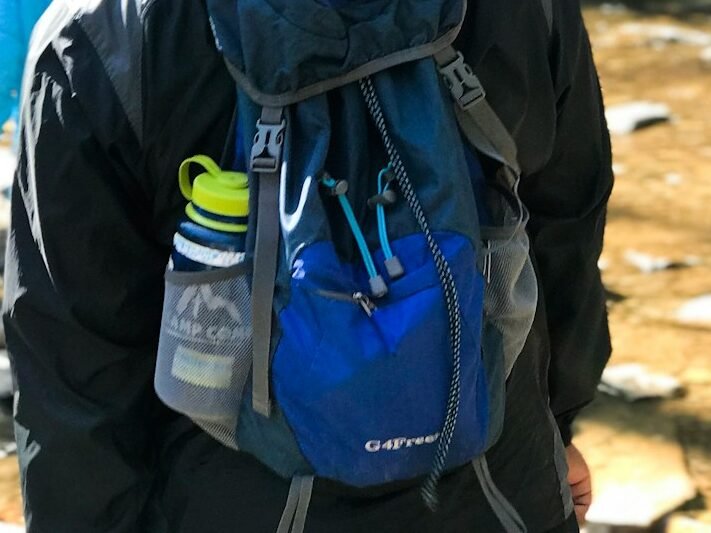Contents
We’ve all been there. You’re on a hike, parched and reaching for your water bottle, only to find it buried deep within your backpack. Or, perhaps you’ve just finished a workout and dread stuffing your damp gym clothes into the same compartment as your laptop. These everyday frustrations are precisely why we’re singing the praises of backpacks with breathable mesh side pockets. This post will explore the often-overlooked advantages of these handy features and help you understand why they’re a game-changer for everyone from students to seasoned travelers.
Beyond the Water Bottle: The Versatility of Mesh Side Pockets
While we often associate mesh side pockets with holding water bottles, their utility extends beyond hydration. The breathable nature of mesh makes these pockets ideal for storing items that need to air out, preventing unpleasant odors and moisture build-up.
Keeping things dry and fresh. Think about those sweaty gym clothes, a damp towel after a swim, or even a piece of fruit that might leak. A mesh pocket allows air to circulate, helping these items dry faster and preventing the musty smell that can develop in an enclosed space. This is a significant advantage over sealed pockets, especially in humid climates or during intense activities.
Quick access and organization. Mesh pockets also offer unparalleled convenience. The semi-transparent nature of the material allows you to see the contents at a glance, making it easy to grab what you need without rummaging through your entire bag. This is particularly helpful for frequently used items like snacks, sunscreen, or a phone.

Understanding Different Types of Backpack Mesh
Not all mesh is created equal. When choosing a backpack with breathable mesh side pockets, it’s worth considering the type of mesh used, as it impacts durability, stretch, and overall performance.
Durable, rip-resistant mesh
Look for backpacks featuring reinforced or rip-resistant mesh. This type of mesh is designed to withstand the wear and tear of daily use, preventing tears and snags that can occur with lower-quality materials. Some manufacturers even use materials like Dyneema or Spectra, known for their exceptional strength-to-weight ratio.
Beyond the material itself, consider the weave and construction of the mesh. A tighter, denser weave will generally be more resistant to abrasion and punctures than a looser, more open weave. You might also see terms like “double-layered mesh,” which, as the name suggests, adds an extra layer of protection for increased durability, especially useful in high-stress areas of the backpack.
Stretchy mesh for a secure hold
The elasticity of the mesh is another crucial factor. A stretchy mesh pocket will conform to the shape of your item, providing a secure hold and preventing items from slipping out. This is especially important for water bottles of varying sizes. Look for mesh with good “rebound” – the ability to return to its original shape after being stretched.
This “rebound” is key to the long-term functionality of the pocket. Over time, mesh that loses its elasticity will become baggy and less effective at holding items securely. Check product descriptions or reviews for mentions of the mesh’s long-term stretch retention; some manufacturers even perform specific tests to ensure the material maintains its shape after repeated use.
Mesh Pockets for Every Lifestyle
Whether you’re a student, a commuter, a hiker, or a traveler, there’s a backpack with breathable mesh side pockets designed to meet your needs.
The Everyday Carry Champion
For daily use, look for a backpack with moderately sized mesh pockets that accommodate a standard water bottle and a few small essentials. The focus here should be on convenience and accessibility.
Also, the placement and orientation of the pockets should be considered. For quick access to a water bottle while commuting or walking around town, side pockets angled slightly forward can be easier to reach than perfectly vertical ones. A small, zippered mesh pocket on the shoulder strap can also be a great addition for storing items like earbuds or lip balm.
The Hiking and Outdoor Enthusiast’s Essential
Hiking and outdoor backpacks often feature larger, more robust mesh pockets that hold oversized water bottles, trekking poles, or even a lightweight jacket. Durability and secure hold are paramount in these designs.
Pay close attention to the attachment points of these larger pockets. Reinforced stitching and multiple contact points with the main backpack body will help distribute the weight of heavier items and prevent the mesh from tearing away from the pack over time. Some outdoor backpacks even feature compression straps that can be tightened over the mesh pockets to secure the contents further.
The Traveler’s Secret Weapon
Travel backpacks may incorporate mesh pockets in various ways, from side pockets for water bottles to internal mesh compartments for organizing toiletries or separating clean and dirty clothes. The breathability of mesh is particularly beneficial when packing for longer trips.
Beyond external pockets, look for internal mesh dividers or zippered compartments within the backpack’s main body. These are excellent for keeping smaller items organized and visible, preventing them from getting lost at the bottom of your bag. They also allow for better airflow within the packed contents, which can help minimize odors if you need to pack damp clothing.
Final Thoughts
We believe that breathable mesh side pockets are a truly underrated feature on a backpack. They offer a unique combination of convenience, ventilation, and organization that can significantly enhance your daily carry experience. The benefits are undeniable from keeping your water bottle within easy reach to preventing your sweaty gear from permeating the rest of your belongings. So, the next time you’re in the market for a new backpack, we encourage you to consider the advantages of mesh – you might find it’s the feature you never knew you needed.